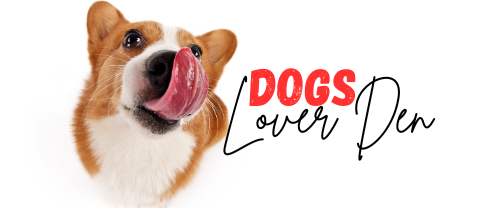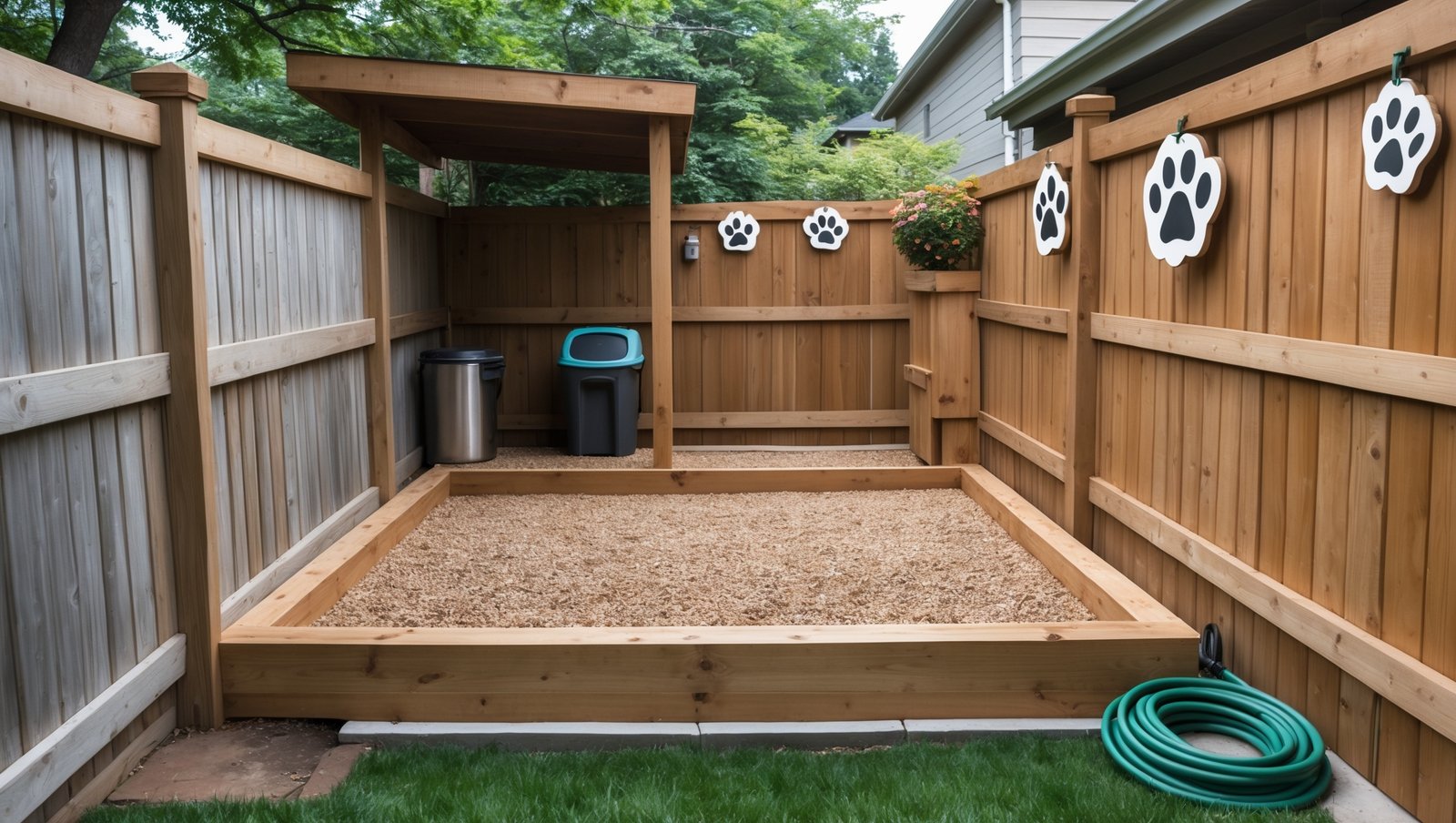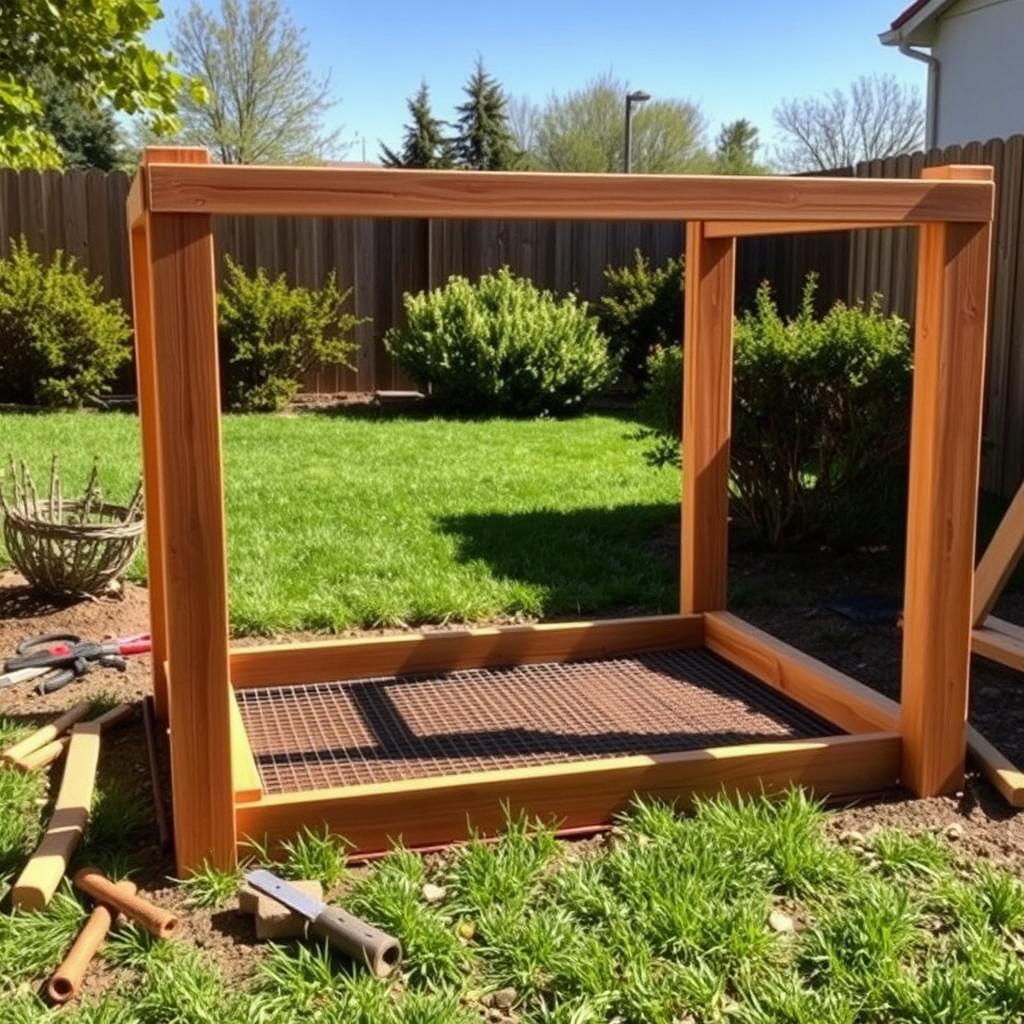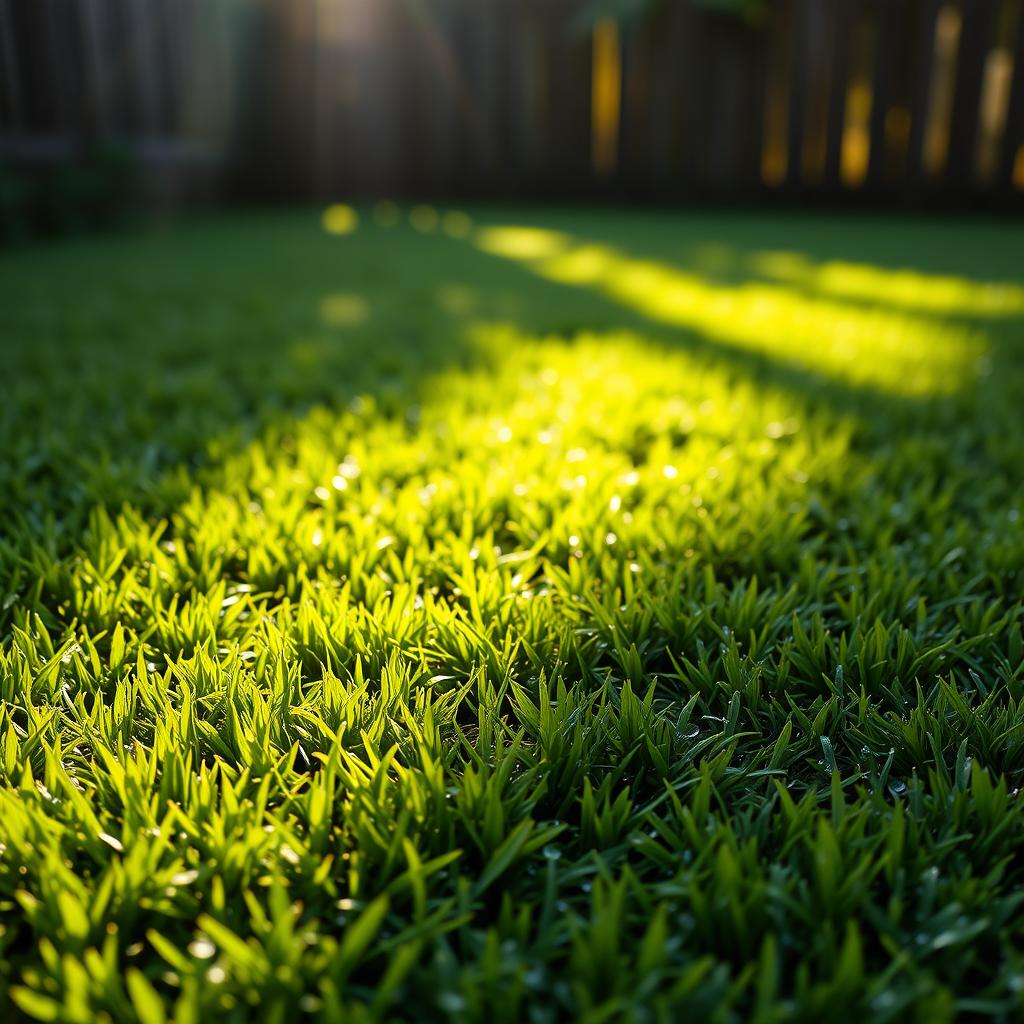Every pet owner understands how essential a dedicated potty space is for their pet. Making a dog potty area in your yard doesn’t need to be expensive or hard. This guide shows you how to create an affordable outdoor dog potty area that’s easy to keep up.
In this guide, we’ll show you how to:
– Choose the perfect location
– Plan the size and shape
– Gather materials
– Build the frame
– Lay the base layers
– Add the top layer
A DIY dog potty area helps you look after your pet’s needs without spending a lot. This do-it-yourself solution is cheap and practical. It gives you a clean, hygienic outdoor dog bathroom that won’t hurt your wallet.
Now, let’s create a comfy and eco-friendly spot for your dog to go potty. This will keep both your pet and your home healthy and joyful.
Choosing the Perfect Location for Your Dog Potty Area
Finding the best spot for your dog’s potty needs is key for a good outdoor space. It’s important to think about how close it is to your house for easy access. Also, think about your dog’s need for privacy and the area’s weather conditions.
Secluded vs. Open Spaces
When picking a spot for your dog to go, consider if they like privacy. Some dogs like a calm area away from busy places. This could be a quiet spot or a corner with a fence. On the other hand, an open space is fine for some pets.
Considering Shade and Sunlight
The comfort of the environment is key. Putting the potty area in a shaded spot helps keep your dog cool, especially in summer. Yet, spots with more sun can keep the ground dry and reduce bad smells. Still, think about what’s best for your dog’s health and happiness.
Understanding Drainage and Slope
Good drainage is essential for keeping the area clean. Ensure the spot has good drainage to avoid water pooling, which can cause smells and health issues. A little slope can help with water run-off, but make sure it doesn’t flow towards places where you hang out or live
With these points in mind, you can make a dog potty area that’s both handy and safe for your pet. This makes for a happier home for everyone.
Planning the Size and Shape of the Potty Area
Creating a potty area for your dog requires careful thinking. Think about the size and shape that suits your pet. It’s important for your dog to have enough room. This keeps them happy and your yard looking good.
Determining the Dimensions
A dog run’s width usually ranges from three to eight feet. The right size depends on your dog’s breed and size. At least a space of 4 by 4 feet is needed. Yet, bigger breeds or those with more yard space might like up to 50 feet. This gives them lots of room for their needs.
Different Shape Options
Marking the Layout with Chalk
After picking the size and shape, marking the area comes next. Use chalk to outline the area clearly. This helps you plan and is a guide for setting up the potty area. Marking ensures your final setup looks just as you planned, avoiding mistakes.
Gathering Materials for Your Budget-Friendly Dog Potty Area
Making a dog potty area that is easy on your wallet starts with picking the right materials. This part will show you what tools and supplies you need. It will also suggest ways to save money and choose things that are good for the planet. These tips help you make smart choices that don’t harm the environment.
Essential Tools and Supplies
Start by collecting everything you need for the project. You’ll need a measuring tape, chalk to mark areas, and a saw to cut wood. You’ll also need things for the ground, like pea gravel and landscape fabric. To save money, look for tools that don’t cost a lot or are used. Since dogs can go to the bathroom on many surfaces, pick materials that suit your dog and the weather in your area.
Alternative Materials for Cost Savings
If you want to spend less, consider using different materials. Recycled wood saves money and is good for the planet. Rubber edges or cinder blocks are affordable and last a long time. For the ground, medium-sized rocks work well for draining. Portable dog runs are also an option. They cost less and are easy to set up.
Eco-Friendly Material Options
Choosing materials that are good for the earth is important. Use safe treated wood, eco-friendly pea gravel, and biodegradable fabric. These choices support a green lifestyle and make sure your dog’s area is safe. Adding these items to your project helps the planet and keeps pet care costs down.
Building the Frame for the Potty Area
When you make a dog potty frame, it’s key to have a strong and nice-looking frame. A good frame will last a long time and keep your outdoor area clean and useful for your dog.
Cutting and Preparing the Wood
Start by getting the wood cut to the right size for your dog’s breed. Use lumber that won’t get damaged by the weather, like treated pine, for your pet’s area. Usually, using 1 by 4 inches (25 by 102 mm) boards will give you a strong base for the potty area.
Securing the Frame with Screws
Next, put the wood pieces together with 2-inch (5.1 cm) wood screws. Make sure to drill holes first so the wood doesn’t crack. This helps keep the frame strong.
Reinforcing the Frame if Needed
If the frame doesn’t feel firm enough, add more support with brackets or hinges. This extra step makes it stronger, ready for your pet’s use. Once the frame is set, you might want to make it look nicer. Try painting it or adding pretty stones around it.
Laying the Base Layers for Proper Drainage
Creating a sturdy foundation is key for any outdoor dog potty area. Carefully preparing the site guarantees effective drainage. This keeps the area clean and working well.
Using Pea Gravel for the Base
Start with a strong base of pea gravel. This material is great because it allows water to drain well. It stops puddles and smells from forming. Spread pea gravel evenly. It will be the groundwork for your potty space. The small stones help with drainage and are comfy for pets to walk on.
Optional: Installing a Peg Board for Stability
If you need more stability, especially in busy spots, think about adding a peg board over the gravel. This helps the pea gravel stay in place. It won’t shift when it’s used. With the base layer secure, the structure stays solid and trustworthy. This is very important for pet areas.
Applying Landscape Fabric to Prevent Weeds
The last step is to put landscape fabric over the gravel (and pegboard, if there is one). This fabric keeps weeds away from your pet area. So, no unwanted plants will grow through. A clean, weed-free base makes for a pet potty area that’s easy to keep up and sanitary.
Adding the Top Layer: Sod, Artificial Turf, or Alternative Materials
The choice of the top layer is key for a budget-friendly outdoor dog potty area. Options include natural sod, artificial turf, or other materials like gravel or sand. Each offers special benefits to meet different needs and tastes.
Benefits of Using Fresh Sod
Fresh sod is a favorite because it looks and feels natural, which dogs love. It gives a true grass experience but needs regular care like watering and sometimes replacing. Make sure the area drains well to avoid wet spots that your pet might not like.
Choosing Durable Artificial Turf
Artificial turf is durable and doesn’t need much care. It looks like real grass but cuts down on maintenance. It has a strong backing to stop digging. For cleanliness, add one bag of Envirofill Artificial Grass Infill every 20 square feet of turf. The upfront cost is higher, but it saves money in the long run by not needing water, fertilizer, or mowing.
Using Gravel or Sand as an Alternative
Gravel or sand are good choices for dog potty areas too. They drain well and are easy to clean, but might need to be replaced more often than sod or turf. Gravel is stable, but sand can be softer, which some dogs might like better. Use landscape fabric underneath to keep weeds away and the area neat.
Conclusion
Making an affordable outdoor dog potty is all about smart planning and picking the right materials. By sticking to the tips in this guide, pet owners can build something long-lasting, useful, and nice to look at. This kind of project helps your pet’s happiness and makes keeping your home clean easier.
Pea gravel is a top choice for many because it drains well and feels smooth. It’s vital to make sure water can flow off easily and soil doesn’t wash away. Adding a layer of gravel or sand underneath helps keep the potty area dry and clean. Keeping the area well-maintained, like cutting nearby grass and using products to stop weeds, makes it better for your pet. Teaching your dog to go in this special spot can help avoid messes inside. This is especially helpful if you live in a city with little outdoor space.
When looking at materials like concrete, mulch, sand, or fake grass, each has benefits and downsides. For example, mulch is cheap and easy to find but might smell after rain. Fake grass is simple to clean but harder to clear of poop. The secret to a great outdoor dog potty is matching cost, material, and upkeep needs. We hope this guide helps you make a great place for your pet while your home stays tidy.







